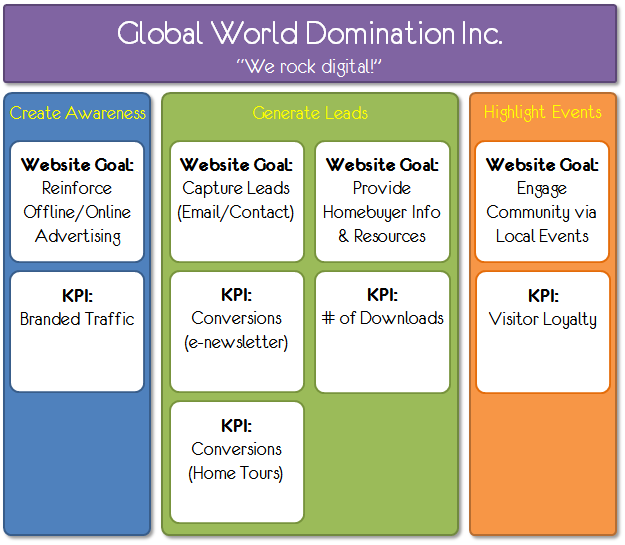How to Start Your Business Intelligence Program: Part III - Defining the Scope of the Program and Measurement Planning
Program Scope
In Part I, we discussed developing your corporate strategy. In Part II, we’ll cover defining the scope of the project and creating your measurement plan. As you pursue your business intelligence program, it extremely important to define the scope of the project at the beginning, clearly identifying the goals of the initiative, articulating the need for the initiative and basically outlining the parameters and metrics required for success. The Program Scope should include:
- Project Charter - Concise Statement of Core Goals and Values of the Program.
- Business Needs - What Business Needs with the Business Intelligence Program address and how will value be generated from the Program.
- Identification and Outline of Internal Team’s Requirements - Which teams/departments will be impacted by the Business Intelligence Program and the desired outcomes from each of these teams/departments.
- Project Justification - Providing stakeholders and executives with a comprehensive analysis of the environment, capabilities that will be changed as a result of implementing a formal business intelligence program.
- Feasibility Study - Performing an assessment of the practicality of the plan, goals and methodology.
- Milestones - This can’t be stressed this enough. Establish milestones to track your progress. Program without clear outlines can quickly lose support as stakeholders and sponsors have no context for whether a plan is proceeding according to plan.
- Resources required (Budget) - Set an informed budget.
- Desired Outcomes - Establish the desired outcomes of the program. Preferably, you’d start with simple, low-hanging fruit, that presents the opportunity for a quick win and then increase the complexity and scope of the outcomes as the program gains momentum.
When done effectively, the scoping exercise allows you to establish a daily guide to monitor the progress of your effort, avoid scope creep, strategically incorporate adjustments to the program and maintain expectations and focus of all stakeholders.
Measurement Plan
In a future blog post, we’ll take an in-depth look at the value of Measurement Plans and how to create them. However, in summary, a Measurement plan is a document in which you define your business objectives and the strategies and tactics to support them in terms of metrics and dimensions you can measure with your data. To quote Avinash Kaushik, “Winners, well before they think data or tool, have a well structured Digital Marketing & Measurement Model. Losers don't.”
(Figure 1) Sample Measurement Plan - Source

We’ve covered a lot of important tasks in this post that will help your organization create a solid foundation and framework for starting a successful business intelligence program. If however, you’re introducing a new business intelligence program to the organization or seeking additional resources to augment your staff, PowerHouse would love to help!
About PowerHouse PowerHouse's goal is to empower enterprises, teams and individuals with the transformative power of data. We do this by leveraging our specialized skills and expertise in digital analytics, data management, data integration, data visualization and marketing technology to augment our client’s staff needs for short and long-term engagements. Need help accelerating your data initiatives? Contact PowerHouse today!
